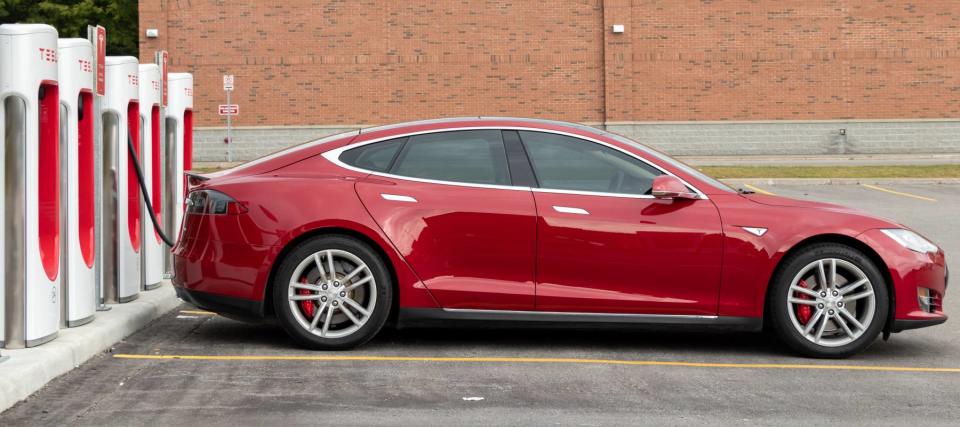So you want to buy a Tesla or other electric car — will your insurance go up?

Do you want to cut back on environmentally taxing practices like driving a gas-powered car, but worry you’ll end up paying for it in other ways?
Every year, more Americans are looking into switching over to hybrid or fully electric-powered vehicles.
But when it comes to finding affordable auto insurance for these technological and ecological marvels, many are finding themselves in unfamiliar territory without a map.
If you’re planning to insure an electric vehicle, there are some important financial considerations to weigh before shifting your plans into higher gear.
Do electric vehicles cost more to insure?

While you’re going to save about $250 a month on gas, an electric vehicle will generally cost you more to insure.
Why is that? Car insurance companies come up with rates based on a whole range of factors. So even if you have a spotless driving record, live in a low-crime area and take advantage of some driving discounts, your rate is still likely to go up compared to your gas-powered car.
That’s because electric vehicles cost more outright and are more expensive to repair. The insurance company may deem you low risk to file a claim, but if anything happens to your car, it’s going to mean costly repairs. So your premiums will be set high to reflect that risk.
If your premium with a gas-powered car is $1,000 a year, you’ll probably pay between $1,180 to $1,320 with an electric car, according to ValuePenguin. But, as always, your rates will vary from insurer to insurer — which is why you should always compare quotes from multiple insurers.
How do other costs stack up?

Most electric cars generally cost more to buy than standard vehicles. And when they’re damaged, you may have a harder time finding a mechanic qualified to repair them — in addition to requiring more expensive and difficult-to-source parts.
Damaged batteries can add to your repair costs as well. If your battery’s leaking, your mechanic will have to take extra precautionary measures, which will be reflected in your bill.
There’s also the need for a charging station. You should expect to have to pay somewhere in the range of $200 to $1,000 to install your own charging station before you hit the road.
Nevertheless, you can expect your new car to incur lower maintenance expenses overall.
Cutting out tailpipe emissions protects both the environment and your car’s interior as you won’t have those chemicals seeping in. And electric cars also don’t need frequent oil changes or replacement radiator hoses, fan belts or gaskets.
So even with slightly higher insurance, your car budget shouldn’t have to change drastically.
Where do I go from here?

Some states, like California, offer rebates to electric car owners that can also help offset additional costs. And the federal government offers a tax credit of up to $7,500 for some electric vehicles.
If you do purchase an EV and begin the process of switching over your insurance policy, don’t forget to ask your insurer if there are any promotions or discounts you can take advantage of to lower your costs.
You may be able to bundle your other policies, like home insurance or life insurance.
Insurance companies often give discounts to safe drivers with clean records. Don’t be afraid to ask in case you’ve missed something in your own research.
But your best option to find savings when you’re looking for car insurance is to shop around for rates. Experts like the Insurance Information Institute will recommend you seek out at least three quotes before settling on an offer.
Shopping around can save you up to $1,100 a year on insurance.
With that done, you’ll feel all the power of sitting in the driver’s seat even when you’re not behind the wheel.
